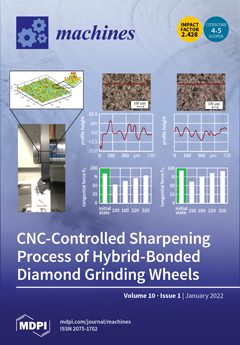Marble is a common rock used in many buildings for structural or ornamental purposes and is widely distributed in underground engineering projects. The rocks are exposed to high temperatures when a tunnel fire occurs, and they will be rapidly cooled during the rescue
[...] Read more.
Marble is a common rock used in many buildings for structural or ornamental purposes and is widely distributed in underground engineering projects. The rocks are exposed to high temperatures when a tunnel fire occurs, and they will be rapidly cooled during the rescue process, which has a great impact on the rock performance and the underground engineering stability. Therefore, the role of cyclic thermal shocks on the physical and mechanical properties of marble specimens was systematically investigated. Different cyclic thermal shock treatments (
T = 25, 200, 400, 600, 800 °C;
N = 1, 3, 5, 7, 9) were applied to marble specimens and the changes in mass, volume, density and P-wave velocity were recorded in turn. Then, the thermal conductivity, optical microscopy and uniaxial compression tests were carried out. The results showed that both the cyclic thermal shock numbers (
N) and the temperature level (
T) weaken the rock properties. When the temperature of a thermal shock exceeds 600 °C, the mass loss coefficient and porosity of the marble will increase significantly. The most noticeable change in P-wave velocity occurs between 200 and 400 °C, with a 52.98% attenuation. After three thermal shocks, the cyclic thermal shock numbers have little influence on the uniaxial compressive strength and Young’s modulus of marble specimens. Shear failure is the principal failure mode in marble specimens that have experienced severe thermal damage (high
N or
T). The optical microscopic pictures are beneficial for illustrating the thermal cracking mechanism of marble specimens after cyclic thermal shocks.
Full article





